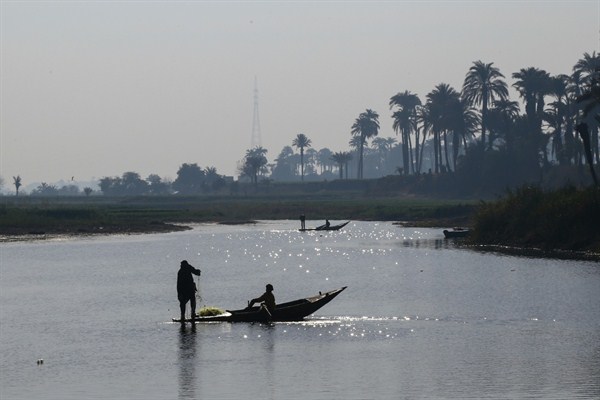At first glance, the Nile valley at Wad Ramli, an hour’s drive north of Khartoum, looks as lush and fertile as ever. Date palms sag, heavy with fruit along the banks. Neat rows of barley await harvesting in the heat. With thousands of miles of unbroken desert to the west and many hundreds to the east, this narrow, green strip—at points only 200 meters wide—still closely resembles the life-giving refuge from a hostile environment that it has been for millennia.
But ask the farmers, fishermen or anyone else who depends on the river for their livelihood, and they’ll tell you this isn’t the same Nile valley they once knew. The river’s water is often too dirty to tend vegetable plots or wash clothes, if they can access it at all. At times, it is so choked with sediment or trash, the current struggles to circulate through their irrigation canals. Nor is the weather behaving as it has in the past. The loss of a dependable Nile River comes at a time when rural communities are already up against a debilitating range of problems. Like many other villages up and down the valley, Wad Ramli is emptying out, its residents leaving to try their luck in the capital and other cities.
The decline of Wad Ramli and other nearby villages is part of a broader trend throughout the wider Nile basin, from the river’s source to the Mediterranean Sea. Decades of mismanagement have left the world’s longest river polluted and drained, even as mushrooming populations along the length of the Nile have fueled demand for food, jobs, potable water and wastewater provision. The Nile basin’s population is projected to almost double to over 400 million by 2050, further magnifying the impact of authorities’ past mistakes and reducing their margin of error now and in the future. In addition to this poor governance, the effects of climate change are adding new uncertainty to a region in which the Nile has often been one of the few constants.

